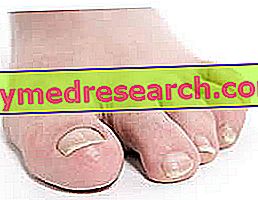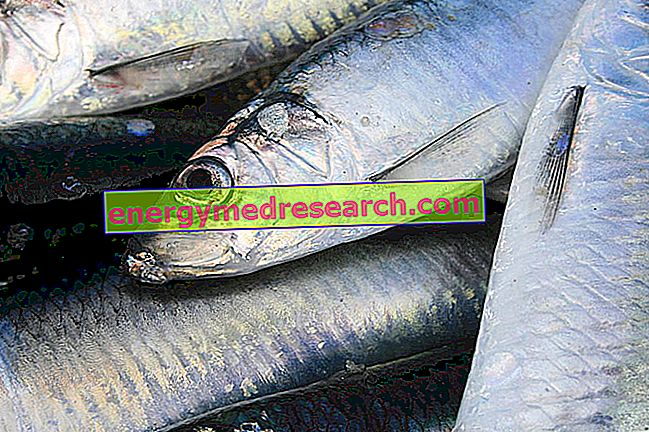Onicoriptosi or ingrown toenails
The disorder popularly known as ingrown toenails is more precisely defined - in medical terms - onychocriptosis . Typical unpleasant and unaesthetic condition of toenails, onychocriptosis occurs when a sharp angle of the toenail penetrates the skin causing pain, redness and inflammation.

Incidence and target
Among the many nail diseases, onychocriptosis is undoubtedly one of the most common. Ingrown nails tend to appear above all among young adults aged between 20 and 30; normally, males are more exposed to risk but even females can experience the same symptoms. The phenomenon is extremely rare in children and infants, probably because the nails are not particularly thick nor too hard.
Causes and risk factors
The problem of ingrown toenails appears whenever the nail bed is too small to support the nail plate, which in turn pushes deeper and deeper, creating pain and inflammation. Growing abnormally, the sharp angle of the outer edge of the nail can pierce the skin, causing infection.
The way in which the nails are cut is extremely important: in fact, when torn or cut too short and crooked, the nails tend to grow back abnormally or laterally, laying the foundations for onychocriptosis.
In addition to the causes described above, other important risk factors have been identified, which may be responsible for ingrown nails. The long list of risk factors includes:
- Arthritis
- Congenital deformity of the feet
- Continuous trauma at the level of the feet
- Diabetes
- Very long toes
- Excessive sweating of the feet
- Fungal infection of the toenails (onychomycosis)
- Malicious surgery interventions carried out on the toenails
- Toenail diseases in general
- Obesity
- Bad posture
- Long-term use of isotretinoin (ingrown toenail can be a side effect due to long-term retinoid therapy)
- Using shoes that are too tight
- Poor foot hygiene
Symptoms
To learn more: Symptoms Ingrown nail
Ingrown nails always cause pain, discomfort, redness and localized swelling; often, small blisters filled with milky or yellowish liquid can be observed, which tend to burst and emit a bad smell. Inflammation triggered by the ingrown toenail causes skin thickening at the lesion, causing further pain and injury.
The pain caused by the ingrown toenail is accentuated by wearing excessively tight shoes; sometimes, the nuisance produced is so severe that even the simple contact of the sheet on the affected finger can be excruciating.
Complications
When not properly treated, an ingrown nail can trigger local infections of varying degrees. As the infection progresses, the infection caused by the ingrown nail can spread the damage in the neighboring tissues to cause abscesses or osteomyelitis (infection of the bone corresponding to the finger involved in the onicocriptosis).

Treatment
Fortunately, ingrown toenails tend to heal spontaneously, without necessarily turning to a specialist. Notwithstanding the above, consulting a doctor or a competent person is always recommended to minimize the risk of infection or other complications.
The podiatrist is the medical figure to refer to in the presence (or in case of suspicion) of ingrown toenails; when the disorder is severe, it is necessary to go to a surgeon.
Please note: when to call the doctor
The doctor's consultation is essential in the following cases:
- Symptoms of ingrown toenail persist
- Diabetes
- Impaired immune system
- Foot disorders (eg diabetic neuropathy)
In general, treatment for ingrown nails depends on the severity of the condition:
- When the problem is superficial, the patient will undergo a conservative treatment that includes numerous footbaths in very hot water, the multi-daily application of an antibacterial and the use of a cotton flock to be inserted just below the edge of the nail to prevent it from growing inadequately. The elastic bandage is also a (relatively effective) alternative to reduce the symptoms caused by the ingrown nail. The method involves physically "pulling" the skin of the finger near the ingrown nail by wrapping the same finger with a special elastic patch: in this way, it is possible to reduce the pressure (exerted by the ingrown nail in the skin) and, at the same time, improve drainage of pus accumulated in situ.
- When the ingrown toenail grows deeply in the skin creating infection, pain and other complications, it is necessary to resort to a partial surgical intervention of avulsion (extraction) of the nail plate. Generally, surgical treatment - performed under local anesthesia with drugs such as lidocaine - is supported by a local antibiotic treatment to be applied in the 7-15 days following surgery.
- To avoid surgical removal of the infected and ingrown nail, an innovative solution method was recently devised which involves the insertion of a special brace (a sort of spring) directly into the affected nail, such as to favor its growth in an adequate way and correct the curvature.
Antibiotics may be necessary as a complementary therapy: when the ingrown toenail causes bacterial inflammation, the patient will have to apply an antibiotic ointment directly to the nail affected by the injury daily (or several times a day).
Prevention
The best way to prevent ingrown nails is to cut them correctly: it is important to keep a certain length of the nail (to avoid the nail being too short). Moreover, the cut must be straight: avoiding to cut the nails in a curved way, it minimizes the risk that these incarnate.
Another very important recommendation to prevent the onset of ingrown toenails is to not use needles or other sharp objects to burst any vesicles filled with liquid, formed near the ingrown nail: such behavior would expose the patient to the risk of new infections.
Before engaging in a sporting activity, individuals prone to ingrowing nails should protect their toes by gently wrapping them on specific sterile-elastic bandages.
Not to mention personal hygiene, which is essential for preventing infections in a context of onychocriptosis. For this purpose, it is recommended to change the socks (strictly of cotton) at least once or twice a day and to leave the feet uncovered (without socks) during the night to favor the breathing of the foot: in doing so, the foot will remain dry and the risk of infection is minimized.
Lastly - but not least - subjects who are prone to ingrown toenails should always wear comfortable shoes, never too tight, to allow the nail to find the space needed to grow properly.



